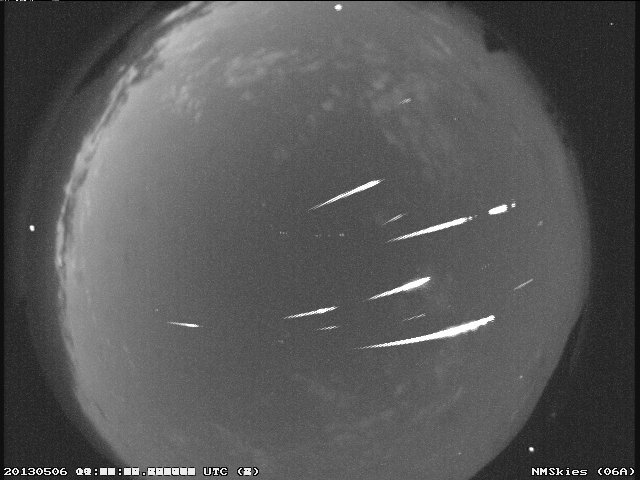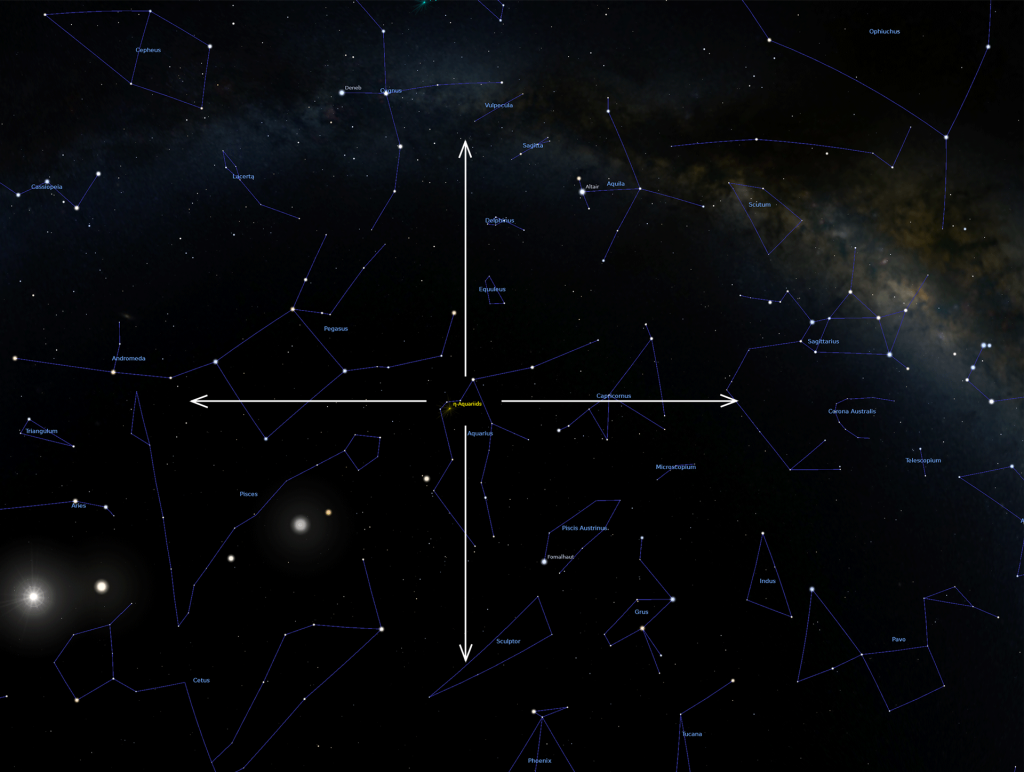Quick Facts
- Zenithal Hourly Rate: 10-30, up to 60
- Peak Date: May 5th
- Source: Halley’s Comet
- Speed: 44 miles (66km) per second

Source

The source of this annual meteor shower is none other than Halley’s Comet. This comet is one of the most well-known and documented throughout history, with observations going back millennia. The orbital period brings it around the Sun about every 76 years. The last return was in 1986 and it will next pass by Earth in 2061. A dusty trail of debris is left behind by the comet. When Earth encounters this trail of small particles, they burn up in the atmosphere, creating the Eta Aquarid meteor shower. Halley’s Comet is also responsible for the Orionid meteor shower in October.

Numbers and Speed
At the high end, Eta Aquarids may produce up to 60 meteors per hour. But there is a catch. Because the radiant is in the southern sky, it barely makes it over the horizon in the northern hemisphere. Anywhere south of the equator will see the highest meteor rate. Those of us north of the equator will see reduced rates of about 10-30 meteors per hour. The fewer meteors that are seen up north are more likely to be “Earthgrazers.” Earthgrazers are long meteors that appear to skim the surface of the Earth at the horizon. Eta Aquarids are known for their quick speed at 44 miles (66km) per second. They occasionally leave behind persistent trains which may last several minutes.

Radiant

Like all meteor showers, the Eta Aquarids are named for the radiant that they appear to originate from. Eta Aquarii is one of the brightest stars in the constellation of Aquarius. The higher the radiant rises in your sky, the higher the meteor rate will be. Aquarius will be at its highest in the eastern sky before dawn. It is not necessary to know exactly where the radiant is because meteors may appear anywhere in the sky. In fact meteors closer to the radiant will have shorter trails due to foreshortening. Unlike sporadic meteors, the trails can always be traced back towards Eta Aquarii.

This Year
2024 will be an excellent year for viewing Eta Aquarids. At its peak on May 5th, the 14% waning crescent moon won’t rise until after 4AM. Meteors may be visible at reduced numbers anywhere from April 15th – May 27th. According to the American Meteor Society, 2024 is expected to be above average due to interactions of the particles with the planet Jupiter.

Viewing Tips
- Get to the darkest skies you can. Light pollution will drown out all but the brightest of meteors. Use the light pollution map or dark site list to find a viewing spot near you.
- Let your eyes adjust to the darkness. The longer you look the more stars and fainter meteors you’ll see. Any bright lights or phone screens will hinder your view. A dim red flashlight or headlamp is best for getting around.
- Turn off your headlights as soon as you park your car. Be considerate if other stargazers are around so you don’t ruin their view.
- A beach chair or camping chair that reclines will be the most comfortable. Otherwise laying flat on the ground on a blanket is fine. You want to take in as much sky as possible so you don’t miss anything.
- Bring warm clothes. You start to feel cold fast when you’re not moving.
- Hot chocolate or coffee is helpful for staying awake.
- Meteors are often spaced unevenly. Sometimes 10 minutes may pass without seeing any and then suddenly there are 10 in a single minute.
- Head over to How to Photograph a Meteor Shower for more photography tips


Comments are closed, but trackbacks and pingbacks are open.